Jerry Ng
Natural Language Processing and Multimodal Stock Price Prediction
Jan 03, 2024Abstract:In the realm of financial decision-making, predicting stock prices is pivotal. Artificial intelligence techniques such as long short-term memory networks (LSTMs), support-vector machines (SVMs), and natural language processing (NLP) models are commonly employed to predict said prices. This paper utilizes stock percentage change as training data, in contrast to the traditional use of raw currency values, with a focus on analyzing publicly released news articles. The choice of percentage change aims to provide models with context regarding the significance of price fluctuations and overall price change impact on a given stock. The study employs specialized BERT natural language processing models to predict stock price trends, with a particular emphasis on various data modalities. The results showcase the capabilities of such strategies with a small natural language processing model to accurately predict overall stock trends, and highlight the effectiveness of certain data features and sector-specific data.
Data-Driven Encoding: A New Numerical Method for Computation of the Koopman Operator
Jan 16, 2023Abstract:This paper presents a data-driven method for constructing a Koopman linear model based on the Direct Encoding (DE) formula. The prevailing methods, Dynamic Mode Decomposition (DMD) and its extensions are based on least squares estimates that can be shown to be biased towards data that are densely populated. The DE formula consisting of inner products of a nonlinear state transition function with observable functions does not incur this biased estimation problem and thus serves as a desirable alternative to DMD. However, the original DE formula requires knowledge of the nonlinear state equation, which is not available in many practical applications. In this paper, the DE formula is extended to a data-driven method, Data-Driven Encoding (DDE) of Koopman operator, in which the inner products are calculated from data taken from a nonlinear dynamic system. An effective algorithm is presented for the computation of the inner products, and their convergence to true values is proven. Numerical experiments verify the effectiveness of DDE compared to Extended DMD. The experiments demonstrate robustness to data distribution and the convergent properties of DDE, guaranteeing accuracy improvements with additional sample points. Furthermore, DDE is applied to deep learning of the Koopman operator to further improve prediction accuracy.
Learned Lifted Linearization Applied to Unstable Dynamic Systems Enabled by Koopman Direct Encoding
Oct 24, 2022Abstract:This paper presents a Koopman lifting linearization method that is applicable to nonlinear dynamical systems having both stable and unstable regions. It is known that DMD and other standard data-driven methods face a fundamental difficulty in constructing a Koopman model when applied to unstable systems. Here we solve the problem by incorporating knowledge about a nonlinear state equation with a learning method for finding an effective set of observables. In a lifted space, stable and unstable regions are separated into independent subspaces. Based on this property, we propose to find effective observables through neural net training where training data are separated into stable and unstable trajectories. The resultant learned observables are used for constructing a linear state transition matrix using method known as Direct Encoding, which transforms the nonlinear state equation to a state transition matrix through inner product computations with the observables. The proposed method shows a dramatic improvement over existing DMD and data-driven methods.
HGI-SLAM: Loop Closure With Human and Geometric Importance Features
Sep 18, 2022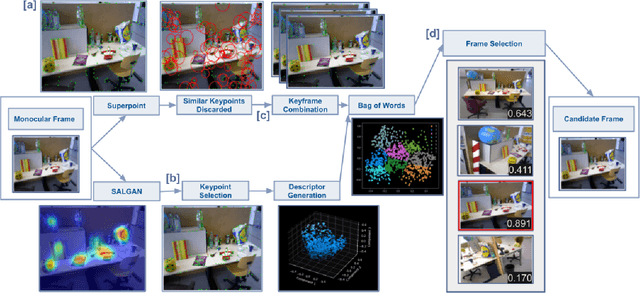
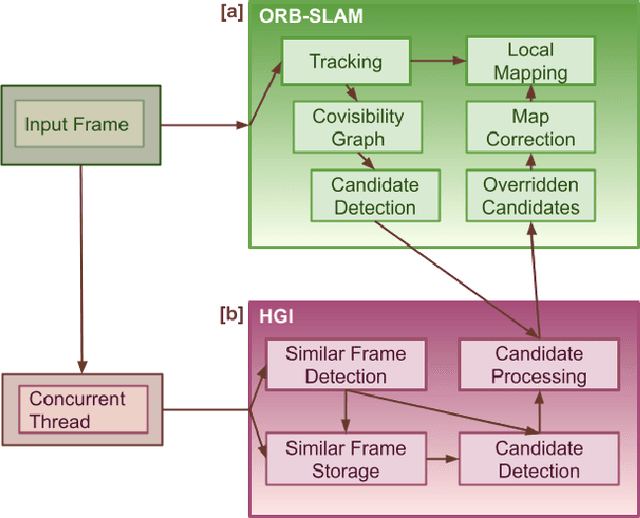
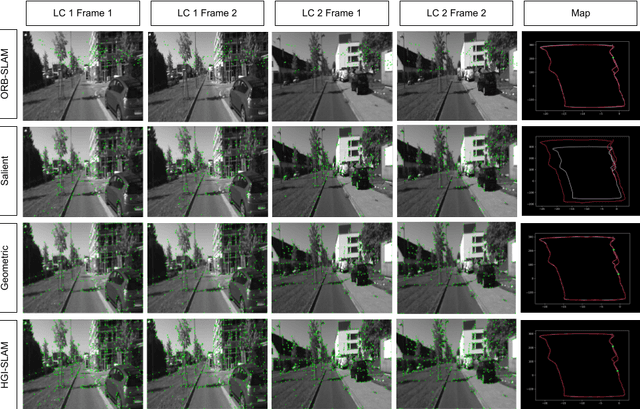
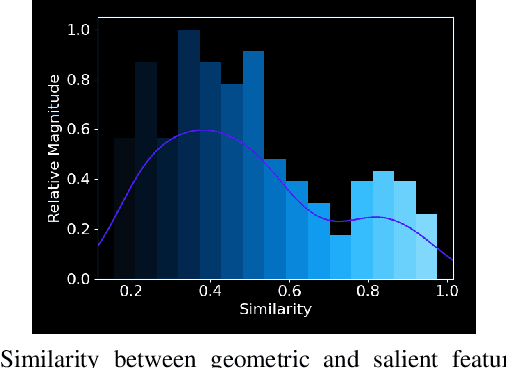
Abstract:We present Human and Geometric Importance SLAM (HGI-SLAM), a novel approach to loop closure using salient and geometric features. Loop closure is a key element of SLAM, with many established methods for this problem. However, current methods are narrow, using either geometric or salient based features. We merge their successes into a model that outperforms both types of methods alone. Our method utilizes inexpensive monocular cameras and does not depend on depth sensors nor Lidar. HGI-SLAM utilizes geometric and salient features, processes them into descriptors, and optimizes them for a bag of words algorithm. By using a concurrent thread and combing our loop closure detection with ORB-SLAM2, our system is a complete SLAM framework. We present extensive evaluations of HGI loop detection and HGI-SLAM on the KITTI and EuRoC datasets. We also provide a qualitative analysis of our features. Our method runs in real time, and is robust to large viewpoint changes while staying accurate in organic environments. HGI-SLAM is an end-to-end SLAM system that only requires monocular vision and is comparable in performance to state-of-the-art SLAM methods.
Image2Reverb: Cross-Modal Reverb Impulse Response Synthesis
Mar 26, 2021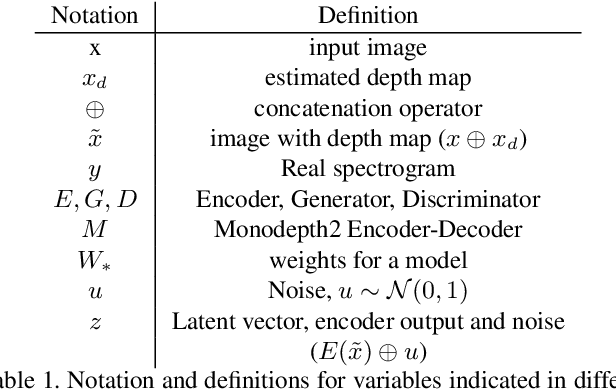
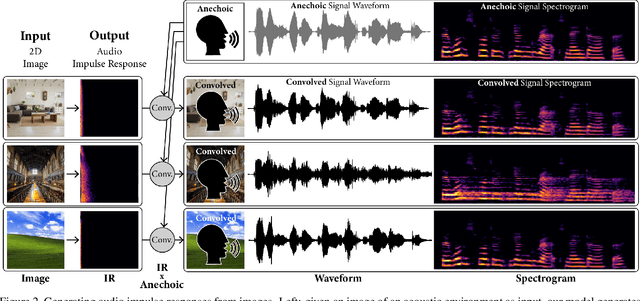
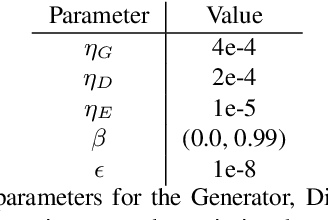
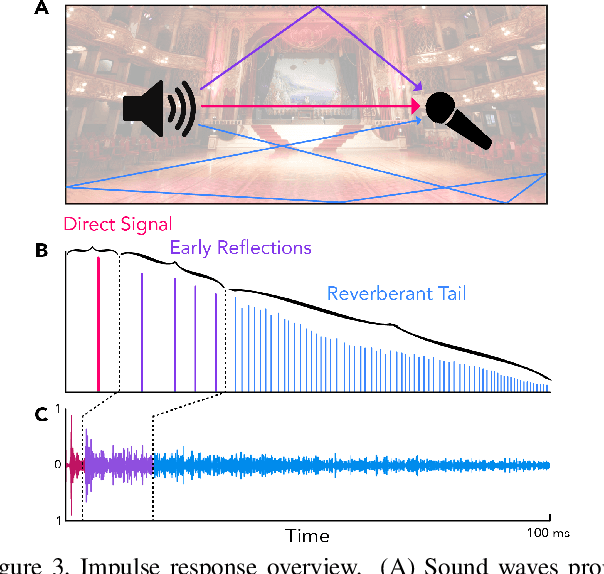
Abstract:Measuring the acoustic characteristics of a space is often done by capturing its impulse response (IR), a representation of how a full-range stimulus sound excites it. This is the first work that generates an IR from a single image, which we call Image2Reverb. This IR is then applied to other signals using convolution, simulating the reverberant characteristics of the space shown in the image. Recording these IRs is both time-intensive and expensive, and often infeasible for inaccessible locations. We use an end-to-end neural network architecture to generate plausible audio impulse responses from single images of acoustic environments. We evaluate our method both by comparisons to ground truth data and by human expert evaluation. We demonstrate our approach by generating plausible impulse responses from diverse settings and formats including well known places, musical halls, rooms in paintings, images from animations and computer games, synthetic environments generated from text, panoramic images, and video conference backgrounds.
 Add to Chrome
Add to Chrome Add to Firefox
Add to Firefox Add to Edge
Add to Edge